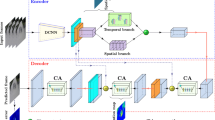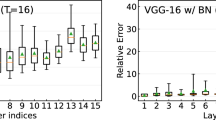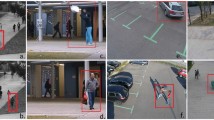Abstract
In recent years, IP (Internet Protocol)-based video surveillance has widely been useful for post-event analysis and assisting the work of privacy protection and public safety. To support high-quality IP video surveillance, error-resilience techniques are important for surveillance system design, because video has more stringent requirements than general video transmission for packet loss, latency, and jitter. The optimal FEC (forward error correction) code rate decision is a crucial procedure to determine the optimal source and channel coding rates to minimize the overall picture distortion when transporting video packets over packet loss channels. The conventional FEC code rate decision schemes using an analytical source-coding distortion model and a channel-induced distortion model are usually complex and typically employ the process of model parameter training, which involves potentially high computational complexity and implementation cost. To avoid the complex modeling procedure, we propose a simple but accurate joint source-channel distortion model to estimate the channel-loss threshold set for optimal FEC code rate decision. Since the proposed model is expressed as a simple closed form and has a small number of scene-dependent model parameters, a video sender of the surveillance system using the model can be easily implemented. For training the scene-dependent model parameters in real time, we propose a practical test-run procedure. This method accelerates the test-run while maintaining its accuracy for training the scene-dependent model parameters. Using the proposed simple model and practical test-run method, the video sender can find the optimal code rate for on-the-fly joint source-channel coding whenever there is a change in the packet-loss condition in the channel. Simulations show that the proposed method can accurately estimate the channel loss threshold set, resulting in an optimal FEC code rate with low computational complexity.


















Similar content being viewed by others
References
Wenger S (2003) H.264/AVC over IP. IEEE Trans Circuits Syst 13(7):645–656
Stockhamme T, Hannuksela MM, Wiegand T (2003) H.264/AVC in wireless environments. IEEE Trans Circuits Syst Video Technol 13(7):657–673
Psannis K (2015) HEVC in wireless environments. J Real Time Image Process 1–8
Schierl T, Hannuksela M, Wang Y, Wenger S (2012) System layer integration of high efficiency video coding (HEVC). IEEE Trans Circuits Syst Video Technol 22(12):1871–1884
Psannis K, Ishibashi Y (2008) Efficient flexible macroblock ordering technique. IEICE Trans Commun E91-B(08):2692–2701
Psannis K, Ishibashi Y (2006) Impact of video coding on delay and jitter in 3G wireless video multicast services. EURASIP J Wireless Commun Netw 2006, Article ID 24616, 2006:1–7
Ye Y, Ci S, Katsaggelos A, Liu Y, Qian Y (2013) Wireless video surveillance: a survey. IEEE Access 1:646–660
Abudoulikemu Y, Huang Y, Ye C (2010) A scalable intelligent service model for video surveillance system based on RTCP. Int Conf Signal Process Syst 3:346–349
Chu D, Jiang C, Hao ZZ, Jiang W (2013) The design and implementation of video surveillance system based on H.264, SIP, RTP/RTCP and RTSP. In: Int. Symp. on Computational Intelligence and Design (ISCID), vol 2 , pp 39–43
Wu D, Hou YT, Zhang YQ (2000) Transporting real-time video over the Internet: challenges and approaches. Proc IEEE 88(12):1855–1877
Wang Y, Zhu Qin-Fan (1998) Error control and concealment for video communication: a review. Proc IEEE 86(5):974–997
Jalil S, Abbad M, Azouzi R (2015) Hybrid FEC/ARQ schemes for real-time traffic in wireless networks. In: Int. Conf. on Wireless Networks and Mobile Communications (WINCOM), pp 1–6
Soltani S, Misra K, Radha H (2009) Delay constraint error control protocol for real-time video communication. IEEE Trans Multimedia 11(4):742–751
Bystrom M, Modestino J (2000) Combined source-channel coding schemes for video transmission over an additive white Gaussian noise channel. IEEE J Sel Areas Commun 18(6):880–889
Chatellier C, Boeglen H, Perrine C, Olivier C, Haeberle O (2007) A robust joint source channel coding scheme for image transmission over the ionospheric channel. Signal Process Image Commun 22(6):543–556
Nafaa Abdelhamid, Taleb Tarik, Murphy Liam (2008) Forward error correction strategies for media streaming over wireless networks. IEEE Commun Mag 46(1):72–79
Stuhlmuller K, Farber N, Girod B (2000) Analysis of video transmission over lossy channels. IEEE J Sel Areas Commun 18(6):1012–1032
Frossard P, Verscheure O (2001) Joint source/FEC rate selection for quality-optimal MPEG-2 video delivery. IEEE Trans Image Proc 10(12):1815–1824
Kwon JC, Kim J (2002) Adaptive code rate decision of joint source channel coding for wireless video. Electron Lett 38(25):1752–1753
Wu H, Claypool M, Kinicki R (2003) A Model for MPEG with Forward Error Correction and TCP-Friendly Bandwidth. In: Proc. NOSSDAV, June 2003
He Z, Cai J, Chen C (2002) Joint source channel rate-distortion analysis for adaptive mode selection and rate control in wireless video coding. IEEE Trans Circuits Syst Video Technol 12(6):511–523
Chen Z, Soyak E, Tsaftaris S, Katsaggelos A (2012) Tracking-optimal error control schemes for H.264 compressed video for vehicle surveillance. In: European Signal Processing Conference (EUSIPCO), pp 1900–1904
Schulzrinne H, Casner S, Frederick R, Jacobson V (2003) Real-time transport protocol. IETF RFC 3550, July 2003
Cavusoglu B, Schonfeld D, Ansari R, Bal DK (2005) Real-Time low-complexity adaptive approach for enhanced QoS and error resilience in MPEG-2 video transport over RTP networks. IEEE Trans Circuits Syst Video Technol 15(11):1604–1614
Joint Video Team (JVT), H.264/AVC Reference Software Version JM 13.2, http://iphome.hhi.de/suehring/tml/download/
Osterman J et al (2004) Video coding with H.264/AVC: tools, performance, and complexity. IEEE Circuits Syst Mag 4(1):7–28 (First Quarter 2004)
Zhou H, Zhou J, Xia X (2008) The motion vector reuse algorithm to improve dual-stream video encoder. In: Proc. Int. Conf. Signal Process. Oct. 2008
ITU-T Recommendation H.263-Video Coding for Low Bit Rate Communications, Feb. 1998
Kang L, Leou J (2002) A new error resilient coding scheme for H.263 video transmission. Lect Notes Comput Sci 2532:814–822
Qu Q, Pei Y, Modestino JW (2006) An adaptive motion-based unequal error protection approach for real-time video transport over wireless IP networks. IEEE Trans Multimedia 8(5):1033–1044
Acknowledgments
This research was supported by the Basic Science Research Program through the National Research Foundation of Korea(NRF) funded by the Ministry of Education(NRF-2015R1D1A1A01058873).
Author information
Authors and Affiliations
Corresponding author
Rights and permissions
About this article
Cite this article
Jung, Tj., Jeong, YW., Lee, Hr. et al. Error-resilient surveillance video transmission based on a practical joint source-channel distortion computing model. J Supercomput 73, 1017–1043 (2017). https://doi.org/10.1007/s11227-016-1762-3
Published:
Issue Date:
DOI: https://doi.org/10.1007/s11227-016-1762-3




